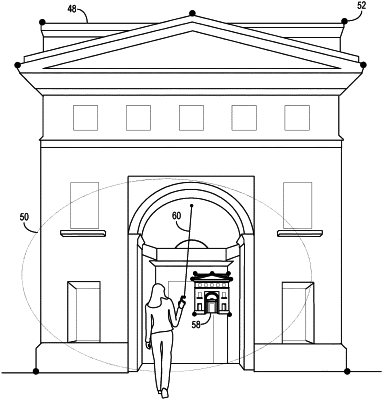| CPC G06F 3/04815 (2013.01) [G02B 27/0093 (2013.01); G02B 27/017 (2013.01); G06F 3/017 (2013.01); G02B 2027/0178 (2013.01)] | 18 Claims |

|
1. A computing system, comprising:
a display;
a processor and associated memory, the processor being configured to execute one or more programs stored in the memory to:
display a virtual object at least partially within a field of view of a user on the display;
identify a plurality of control points associated with the virtual object;
invoke a far interaction mode for the virtual object;
in the far interaction mode, receive a trigger input from the user;
in response to receiving the trigger input in the far interaction mode, invoke a near interaction mode and display a virtual interaction object including a copy of the one or more control points, wherein:
the copy of the one or more control points is displayed nearer to the user than the virtual object and concurrently with display of the virtual object;
the virtual interaction object is one of a plurality of virtual interaction objects that the processor is configured to generate; and
the trigger input is one of a plurality of possible trigger inputs, each of the possible trigger inputs being a corresponding gesture, each gesture being associated with one virtual interaction object of the plurality of virtual interaction objects;
receive a user interaction input performed by the user at the virtual interaction object; and
execute control of the virtual object as specified by the user interaction input at the virtual interaction object.
|